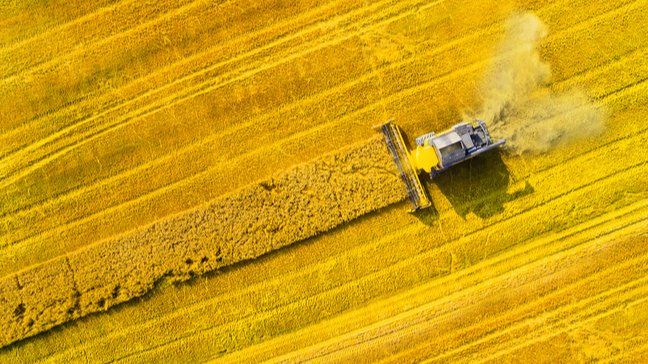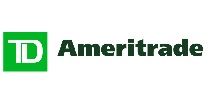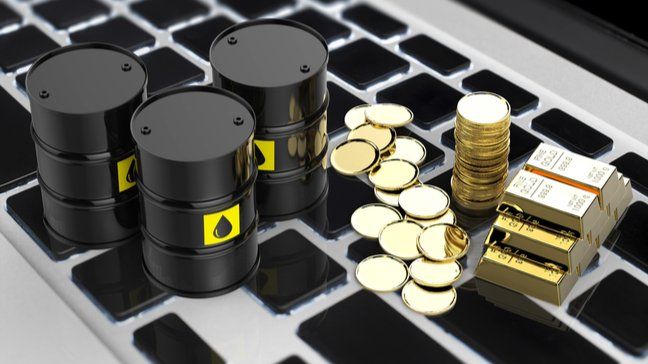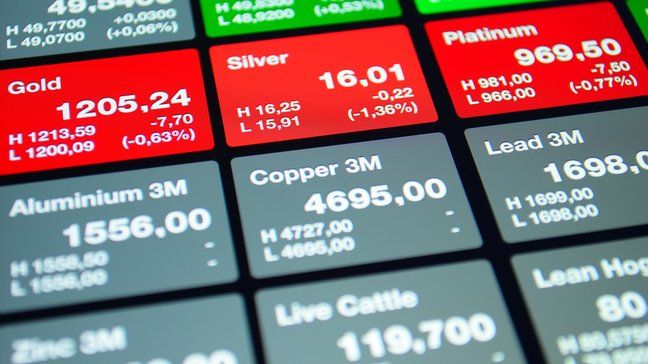As a newer investor, chances are you started with stocks – either individual stocks or something like an ETF. Now, though, with a little bit more experience, you might want to broaden your portfolio.
Investing in commodities and other asset classes can return some really nice rewards – however, you’ll need to learn the ins and outs before you begin.
If you’re ready to take the next step, use this guide to help you learn how to diversify your investments through commodities investment and trading.
First, let’s talk about exactly what commodities are.
What are commodities?

Commodities are the goods and raw materials that circulate on the global market, such as natural resources and agricultural products. They impact our everyday lives, whether we’re investors or not.
Commodities can come in one of two forms:
- Materials that consumers buy in their original states.
- Materials used to create or build other products before they reach consumers.
These materials generally fall into two categories – hard and soft commodities:
- Hard commodities, which are natural resources like metals and oil, require drilling or mining to extract them from the earth. That often requires breaking through rock or another hard surface to reach them.
- Soft commodities, on the other hand, are usually agricultural products raised on farms, like meats, fruits, vegetables, cotton, and soybeans. Some of these sell directly to consumers as what’s called “foodstuff”, while others, like cotton, become raw materials for further production in the manufacturing process.
Types of commodities
When you start to invest in commodities, you’ll find them arranged into four broad categories:
- Agriculture.
- Livestock and meat.
- Metals.
- Energy.
Each category has its own upsides and risks, so your choice for which to invest in (if any) depends on your goals and how you want to diversify your portfolio.
Agriculture
Agricultural commodities, like soybeans, cotton, and corn, present many opportunities as well as risks. For example, wheat reaches beyond the crop as raw material, since it’s featured in everything from bread to beer.
Agricultural commodities also become one of the most vulnerable types, especially during particular times of the year and under other circumstances. For example, harvest seasons determine crop yields, while storms like hurricanes and tornadoes can completely destroy crops.
The value of agricultural commodities also fluctuates with supply and demand, as well as populations in a given area. If consumers don’t want that type of crop, its value drops, which can leave investors in the red.
Livestock, meats, and animal products
Livestock and meats also fall under the agriculture umbrella, as do animal byproducts. Cattle, hogs, poultry, and other livestock have value on their own, but different cuts of meat have separate values. (For those Trading Places fans, this is where you’d find pork bellies).
While eggs, milk, cheese, and similar products don’t fall under the meat category, they aren’t a crop either.
Many people differentiate livestock from agriculture to signify livestock as living creatures rather than as objects for sale. Animals also carry different risks than do other types of agricultural products, since things like disease and failure or inability to reproduce can drastically affect the market.
Metals
Precious metals have become one of the most popular types of commodity investments. Metals often become a fallback for people who want more security. These investors will buy precious metals like gold, silver, palladium, and others, to hedge against situations like market crashes, inflation, and general devaluation.
Certain precious metals carry more value (and more consistent prices) than others. Silver, for example, tends to fluctuate more than gold based on its industrial use and its aesthetic value.
Energy
Energy, as a commodity, experiences fluctuations of its own. Energy commodities, such as crude oil and gasoline rely on supply and demand. When oil wells decrease output, the price of oil skyrockets.
Because of the green movement across the world, investors have also started paying more attention to renewable energy sources, like wind and solar power. These changes from investors also affect the prices of energy commodities.
As more people invest in alternative energy, that leaves fewer investors in fossil fuels. Therefore, the prices of fossil fuel commodities go down with demand.
How much money do you need to trade commodities?
The amount of money you need to trade commodities depends upon how much you plan to invest as well as which commodities interest you.
It’s easy to start optimistically, thinking you’ll make 100% returns in your first year. Sorry to tell you – you probably won’t.
Before you start trading commodities, save at least enough money to support yourself for a year. If you can save more, that’s even better.
You should also create a commodity account and put enough money into it that you’ll turn a profit when you trade.
Many beginners consider trading commodities as a hobby and don’t take it seriously. That’s when you risk losing your funds if you don’t put in the work to predict the market and make smart investing choices.

TD Ameritrade can help you manage your accounts and give you the tools you need to make better investments from the start. With TD Ameritrade, you can invest in commodities futures (as well as a large number of other investment types).
I’ll take more in-depth below about commodities futures.
Even if you don’t trade commodities full-time like some investors, treat it like it matters. When you prepare, you can anticipate potential losses without breaking your bank account.
How are commodities different from other investment assets?
As you can see, commodities are a completely separate class of assets from stocks, bonds, and other investments. They generally have natural, rather than manufactured origins and their value comes from how people and corporations gather and process them. For example, if you invest in wheat, someone has to actually harvest that wheat before it becomes part of the market.
Investors usually treat all commodities with the same value regardless of which company has produced or extracted it. It doesn’t matter if the gold comes from a pot under a rainbow – the value comes from the product, not its source.
That means that no matter where you purchase a commodity, you’re likely to see it on sale for the same or similar price elsewhere. But that doesn’t mean prices don’t fluctuate.
Commodities come in many forms, and as an investor, you need to know which ones have the biggest upside BEFORE you decide to invest. Commodities carry more risk than other types of investments, too. Since they’re natural products, natural disasters and other problems can create significant setbacks for different industries.
How to buy commodities

When it comes to commodities, you will find no shortage of ways to invest. Since the founding of the CBOT, commodities trading has come not only in the form of physical goods but also futures, stocks, Exchange-Traded Funds (ETFs) and Exchange-Traded Notes (ETNs), and mutual funds.
How you invest in commodities depends on the goals you have for your portfolio. Explore your options before you decide which route you want to invest in commodities.
How to invest in commodities futures
Futures contracts get around some of the risks that come with investing in commodities. Instead of buying a certain amount of a physical commodity at once, futures contracts allow you to purchase or sell it later.
When you invest in futures, you agree to a price at the time you invest, but you don’t buy or sell the product until a future date – hence the name of this investment type.
You also aren’t buying the actual commodity. When you buy or sell futures, you don’t purchase barrels of oil or bushels of wheat (can you imagine?). You deal with the cash value of those products.
Some of the most popular exchanges for futures include:
- S&P 500 Index.
- Dow Jones Industrial Average.
- Nikkei 225.
- FTSE 100 Index.
- DAX Performance Index.
Most of the time, individual investors don’t bother with futures contracts, and I can’t say I’d strongly recommend you do either unless you’re experienced. That said, some investors might want to lock into a specific price for a commodity like oil or gold. Since commodity prices fluctuate rapidly and widely, investors hope to get a better deal at the end of the contract period.
As I mentioned above, TD Ameritrade offers commodities futures, so they’re your best bet if you’re looking for an experienced platform with all of the tools you’ll need.
Futures contracts still carry some risk, and you either win or lose at the end. If you, as the buyer, lock into a price that falls later, you get a bad deal. Whereas you might have gotten a lower price, you agreed to pay the higher one. Likewise, if you’re selling at a locked-in price and then that price goes up, you might have lost a chance to make more profit.
If you decide to invest in futures, you should learn the jargon. One concept is the margin and margin call. You will see two types of margin: initial and maintenance.
- Initial margin. When you agree to a futures contract, you also agree to a margin in the form of a percentage of your investment value that you need to pay in cash. Your broker provides the remaining funds. The Federal Reserve Board determines margin requirements for trading and requires an initial margin of at least 50%. However, many brokers demand as much as a 70% margin. That percentage will prevent you from sustaining significant losses.
- Maintenance margin. Likewise, the Fed requires at least a 25% maintenance margin, which brokers may raise to 40%. What does this mean to you? You will need to maintain your account’s equity at between 25 and 40% of the margin account’s value.
- Margin call. If you experience losses, you’ll get a margin call from your broker, requiring you to deposit more funds to meet your margin level.
If you plan to invest in futures contracts, you should know the market for whichever commodity you choose as an investment. Futures investing involves speculation, and if you guess wrong, you could lose a LOT of money.
How to invest in commodities stocks
Commodities stocks allow you to invest in a commodity without directly investing in the product itself, but rather, by purchasing stock in a company that buys and sells it.
For example, instead of buying crude oil, you invest in the company that mines it. This type of investment has benefits and risks that depart from what you usually see when trading in commodities.
Because you invest in the company, the value of your stock fluctuates based on the corporation’s success. That doesn’t always mean the value rises with that of the commodity. Sometimes, even if the commodity’s value goes up, your stock doesn’t.
In general, if a company doesn’t produce the expected amount of a commodity, the stock suffers. When commodity prices go up, low yields from companies can be frustrating.
Factors that are unique to the company you invest in can contribute to the value of your stock. Remember that your investment is in the company, not the generic commodity. So if the commodity does well, but the company does not, your stock follows the fortunes of the company.
At the same time, investing in commodities through stocks can carry less overall risk. Like any other stock investment, you should research the state of the company, including its financial health before you purchase the stock. Be sure also to determine where it ranks among other companies that buy, sell, or make the same commodity.
How to invest in commodities ETFs and ETNs

Exchange-traded funds (ETFs) contain a collection of securities (like stocks) that together reflect an index such as the S&P 500. Looking like mutual funds, ETFs differ because they trade on the stock market. Because of this unique blend, they provide the diversification you’d see from a mutual fund with the added flexibility of a stock.
Exchange-traded notes (ETNs) are like ETFs in that they align with an index and trade like stocks. However, ETNs are senior, unsecured debt securities that a bank issues and that promise to pay the full value of the index upon maturity.
ETNs can be a bit more confusing, so it’s best to spend time researching and understanding how they work before you invest in them.
 E*TRADE can help you, whether you’re a beginning or advanced investor, to make better investing decisions and set you up with $0 commission trades. In fact, they have a list of top Commodity ETFs and Commodity ETNs you can invest in to help get you started.
E*TRADE can help you, whether you’re a beginning or advanced investor, to make better investing decisions and set you up with $0 commission trades. In fact, they have a list of top Commodity ETFs and Commodity ETNs you can invest in to help get you started.
Both ETFs and ETNs allow you to dip your toe in the waters of commodities. You don’t have to purchase the actual product, and they may even deal with futures contracts to mitigate some risk. You can also invest in commodity baskets or bundled commodities.
ETFs and ETNs track the price of a commodity repeatedly over the trading day. They also allow you to invest in commodities without understanding all the nuances of the commodities market.
The way you invest with ETFs and ETNs depends in part on the commodity itself, too. For example, while precious metals ETFs have expense ratios that dictate how many shares you have in the commodity, oil and gas ETFs usually use futures contracts.
ETFs and ETNs also offer an easier way to diversify your investment portfolio with commodities. Make sure to research the companies thoroughly, though. These types of investments can be a great starting point into the market as you expand your knowledge of commodities.
How to invest in commodities index and mutual funds
Index and mutual funds work differently from other types of commodities investments. They have liquidity like stocks, but they don’t trade on an exchange.
With a mutual fund, you pool your money into a fund with other investors. When investing in commodities mutual funds, you generally have the help of a professional fund manager, just keep in mind that managed funds tend to come with higher fees.
You can invest in multiple commodities and industries with a managed account, which allows for immediate diversification.
Index funds, on the other hand, track the price of a specific commodity over a trading day. Because mutual funds don’t use an exchange, they don’t track the price during the day. They wait until the end of each day, after the price has settled, to determine the commodity’s value.
With mutual funds, you can choose to invest in only one commodity or use a combination fund. Combination funds track multiple assets, allowing you to diversify your portfolio further.
As with stocks and ETFs, the value of a mutual fund goes beyond the commodity itself. If the stock market changes or a company you invest in tanks, you’ll see it in your commodities’ prices.
You can get more hands-on experience with commodities with index mutual funds that use futures contracts. Not all of them use futures, but those that do can allow you a more in-depth look into predicting your commodity’s fluctuations.
Mutual funds are a good option for beginning investors as a step into commodities. Because commodities are more complicated than stocks alone, they require more specific knowledge. Managed mutual funds allow you to have help managing accounts as you learn about the markets.
How to invest in commodities using a CPO
Hiring a commodity pool operator (CPO) can be smart, especially if you don’t yet have experience investing in commodities. These people collect money from multiple investors to pool into one fund and then invest it in a commodity or commodity basket.
A CPO will not only manage your fund but also keep records to show who’s investing, what they’ve invested in, and the transactions related to the pool. The CPO may also make investment decisions based on the fluctuations of a particular market.
When you hire a CPO, you also get the financial expertise of a commodity trading advisor (CTA). A CTA will work with your CPO to make the best trading decisions for you and any other investors in the pool.
All CPOs and CTAs must register with the Commodity Futures Trading Commission. After a background check, they can offer financial management or advice to you as the investor.
Using a CPO also gives you more options when it comes to investing. Because they manage a pool of investors, they can use the pooled funds for better investments, creating more opportunities for trading commodities. Usually, CPOs invest in futures contracts and options.
Both beginner and experienced investors use CPOs. Your methods of investing should depend on your preferences. Many investors find it easier to use CPOs to help expand their portfolios.
So, should you invest in commodities?
Investing in commodities comes with its own set of risks and benefits. If you don’t have experience and haven’t done extensive research into trading commodities, you probably shouldn’t try it yet.
However, commodity investment can give you a huge advantage when it comes to portfolio diversification. That can help guard against volatile markets.
Investing in commodities can also hedge against inflation. In times like these, commodity prices often skyrocket, whereas other types of investments, like stocks, lose their value.
Because so many factors play into commodity values, you can earn high returns upon your investments. If you know which commodities to invest in at a given time, you can take advantage of supply and demand.
Still, commodities carry more risks than many other types of investments. Unlike stocks and bonds, commodities are vulnerable to natural disasters, global competition, economic conditions, and more. That makes them more volatile since we never know which direction the market may turn.
Market exposure can also present a risk when it comes to politics, currency, and other economic factors around the world. Plus, investing in commodities concentrates your assets.
Whether investing in commodities is wise for you or not depends upon your investment goals. If you want to diversify and handle the risks that come with potential losses and volatility, commodity trading can be a profitable way to branch out.
Summary
Investing in commodities can help you build and diversify your portfolio. While that may seem like an attractive thought, make sure you do your research before leaping into commodity trading.
Different investment strategies yield different gains and present various risks. Your plan should depend on your risk preference level. As you learn, you can branch out, but start where you feel comfortable.
Before you can trade successfully, you need to know how to make wise investment decisions.


